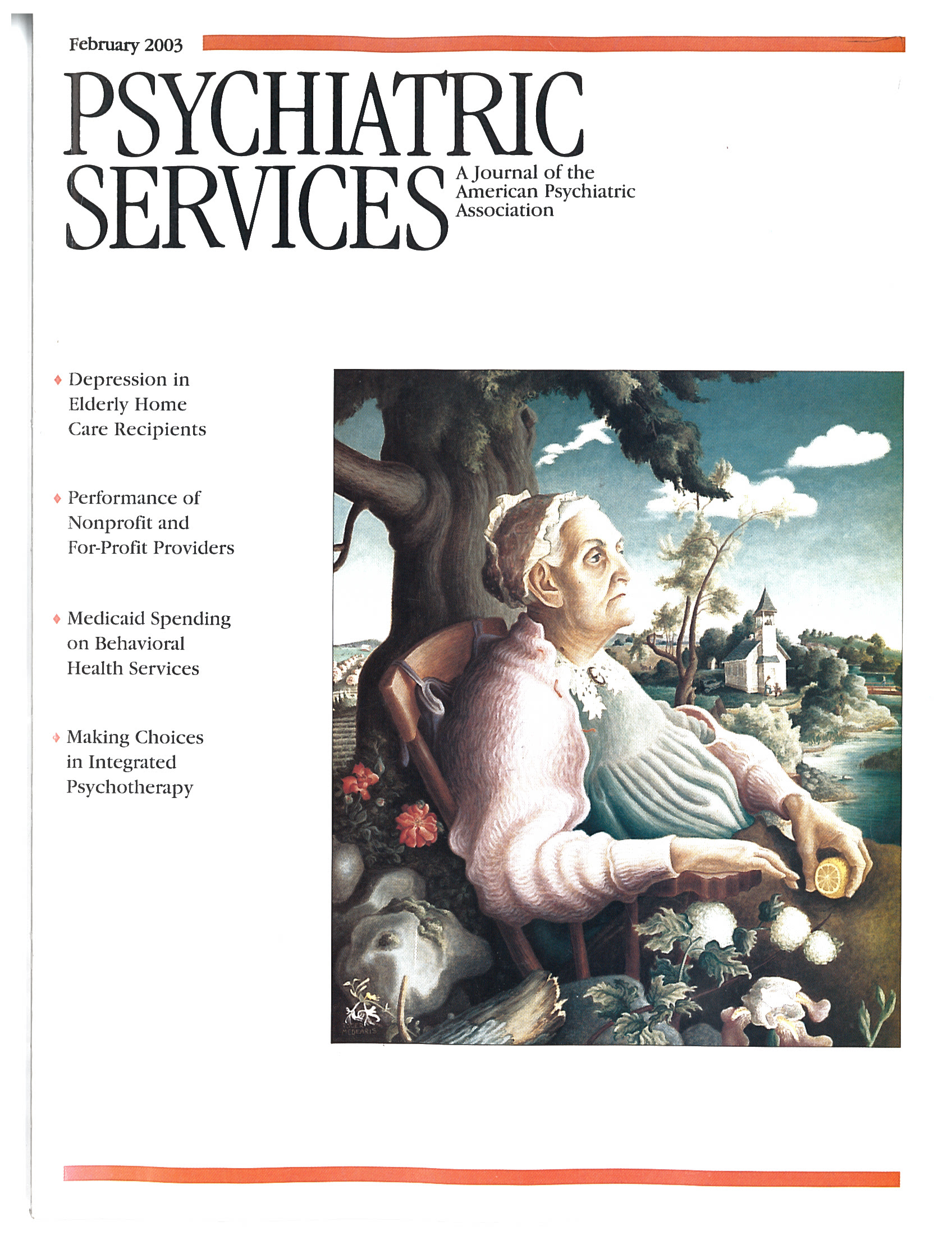Patterns of Service Use Among Persons With Schizophrenia and Other Psychotic Disorders
Abstract
OBJECTIVE: This study assessed 12-month service use patterns among people with psychotic disorders and sought to identify determinants of service use. METHODS: As part of a large two-phase Australian study of psychotic disorders, structured interviews were conducted with a stratified random sample of adults who screened positive for psychosis. Demographic characteristics, social functioning, symptoms, mental health diagnoses, and use of psychiatric and nonpsychiatric services were assessed. Data were analyzed for 858 persons who had an ICD-10 diagnosis of a psychotic disorder and who had been hospitalized for less than six months during the previous year. RESULTS: People with psychotic disorders had high levels of use of health services, both in absolute terms and relative to people with nonpsychotic disorders. Those with psychotic disorders were estimated to have an average of one contact with health services per week. Use of psychiatric inpatient services was associated with parenthood, higher symptom levels, recent attempts at suicide or self-harm, personal disability, medication status, and frequency of alcohol consumption. Services provided by general practitioners (family physicians) were more likely to be obtained by older people, women, people with greater availability of friends, those with fewer negative symptoms, and those whose service needs were unmet by other sources. People who were high users of health services also reported having more contact with a range of non-health agencies. CONCLUSIONS: The predictors of service use accounted for small proportions of the variance in overall use of health services. The role of general practitioners in providing and monitoring treatment programs and other psychosocial interventions needs to be acknowledged and enhanced.



